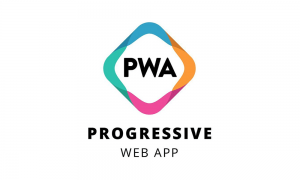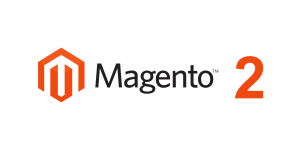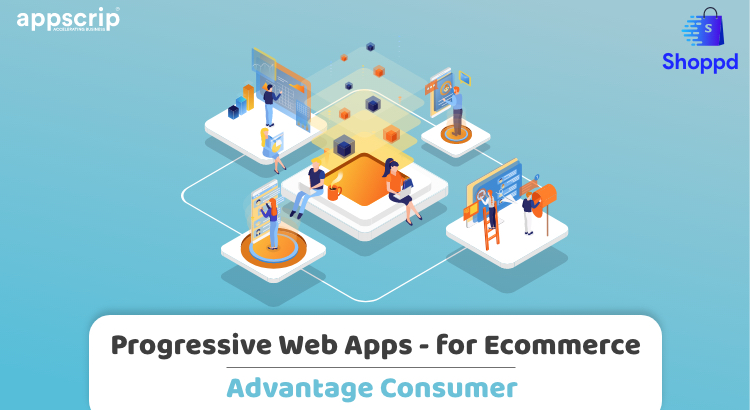Progressive Web Apps are in the limelight and many experts believe it’s a game-changer for the Ecommerce industry. PWA is getting plenty of traction from big brands. Big brands are reaping success having inculcated PWA for business. But small and medium businesses are still to catch up with this technology.
For small businesses, investing in technology is a catch-22 situation as they do not possess deep pockets and aren’t keen to invest unless the returns are clear.
Progressive web apps technology of developing websites gives a look and feel of a mobile app to the user. It imbibes the best features of native apps and pools it with the elements of a website creating a web application. This methodology is to provide user experience on par with that of a native app on the website across all platforms.
Progressive web applications work equally well on mobiles and computers.
Why Progressive Web Apps For Ecommerce?

Smartphones are responsible for 52% of the traffic today and in the ecommerce domain it’s all the more domineering. This suggests the significance of a mobile-first approach for the ecommerce realm.
Ecommerce apps works on a limited consumer base and majority of first time visitors are through mobile browsers. This suggests that mobile apps were not responsible for new clients.
Consumers were losing interest in mobile web even though they disliked congesting their smartphones through bulky apps.
Websites were not leading to conversions in spite of heavy traffic. In the year 2015 the concept of the progressive web app was introduced. A website was built and designed like an app.
Key Components of Magento PWA Studio
Magento PWA Studio is a set of developer tools for the development, deployment, and maintenance of a PWA storefront on top of Magento 2.3 and above. Modern tools and libraries are utilized to create a build system and framework that adheres to the Magento principle of extensibility.

Magento PWA is made up of 2 key components. These two components work independently connected through an API to keep the flow of information between the front end and server.
1. Service Worker
Service Workers enable JavaScript to function at the back end of the PWA. They ensure background tasks such as preloading the content using predictive analysis of the cache, delivering push notifications, and synchronizing the data in cache memory.
2. Web App Manifest
JSON file keeps the format of presenting the web application on the browser. This makes PWA adaptable, interactive, and engagement-friendly along with other crucial features.
Headless Commerce
Headless commerce considers making front end and back end operate individually. Thus front end (Application interface) can operate without the back end. This makes the process to load up quickly. Therefore headless ecommerce can deliver better overall performance and enhances the UX.
PWA mainly ensured that the web solution worked flawlessly on smartphones and PC’s. PWA works seamlessly even if internet connectivity slows down or there’s no connectivity at all. Therefore PWA saves the progress offline until you reconnect to the internet.
Features of Progressive Web Apps
PWA are aptly optimized and use a responsive framework to make the pages adaptive in every device. The webpage uses interactive layouts and engaging design to elevate UX across all platforms.
Key features of PWA for ecommerce
- Responsive design –Adjusts the web page according to the device being used.
- Content Personalization –Cache memory saves the content of a webpage & uses it even without internet. Therefore page loading time is minimal.
- Add icon to home screen –Website can create launch icons and add them to the home screen of a mobile. So SMEs don’t require visitors to download the app but will still get audience comparable to native apps.
- Light & data-friendly –PWA optimizes the website to work fast and fluently on mobile browsers. Website load time is trivial. Cache data stores few specific dynamics of a webpage that doesn’t need to load each time you visit the page.
- Interactive web interface –PWA elevates UX with its interactive UI and intuitive layout. Visitors are under the impression that it’s a native mobile app.
- Search friendly –PWA is in fact a website and has a structured content layout. So PWA is SEO friendly too. Being a web application it can be indexed by search engines.
- Safe & Secure –Data servers are safe in PWA compared to native apps. Data breach can be negated with HTTPS protection.
Benefits of PWA for Online Business
Benefits of PWA for ecommerce are plenty. Browsing experience is impeccable.
Progressive Web Apps brings in plenty of traffic and offers better engagement value which is vital for any business.
- Works on all platforms– PWA works on browsers, so whether it is Windows or Android it doesn’t matter.
- Adapts to device configuration –PWA adapts to the user’s device and is efficient irrespective of the size of the screen or hardware configurations.
- Fluent Performance –PWA being small and compact delivers flawless UX without any processing issues.
- Enhances visual appeal –The interactive design attracts more visitors.
- Bounce rate decreases – Because of an innovative design and intricate features visitors stay put there by reducing bounce rate.
- Enhances customer accessibility –Access is provided to anyone with the URL. Websites have good penetration due to accessibility.
- Consistency of UX – Works consistently towards better UX. Personalized content is aligned with data cache through all channels.
- Conversion rate improves– PWA has enough attributes to create a satisfying UX, which enhances conversion rate.
- Easier to maintain –Mobile apps are plagued with maintenance issues while PWA allows businesses to curtail issues with minimal maintenance.
Progressive Web Apps vs Native Apps
PWA & Native Apps are fundamentally different. Always remember PWA / native apps are not alternatives for each other.
Similarities
- Both have charming visual interface and an engaging design.
- PWA can create home screen icons for direct access as do native app icons.
- Both PWA and native apps are equally good at bringing traffic. Both send push notifications. Both trigger sales and are tools for customer retention.
Differences
- PWA’s can be installed without downloading. But native apps need to be downloaded and installed.
- PWA saves data and works at low internet speeds. PWA saves progress in offline mode and updates when data is available. Native apps need reasonable internet speed to work efficiently.
- Mobile apps work independently on the OS while PWA cannot.
- PWA is small compact web application and can be saved in the form of cache memory. While native apps are bigger and utilize memory storage space.
- PWA is much faster and less complicated while native apps need a lot of permissions to operate optimally.
- PWA can be searched on search engines and visited using URL. But Native apps are not identified by search engines and needs to be downloaded from App stores.
Advantages
Firstly, Progressive Web Apps for ecommerce is not a substitute for native apps. For instance, Magento PWA Studio reaches a wider audience than apps. There were drawbacks for native apps as they had to be downloaded.
PWA enhances ecommerce reach to infiltrate mobile audiences even though native apps are easily available.
Issues with Native Apps That PWA Resolves
Poor Discovery – Mobile apps are only available on app stores and don’t show up in search engine results. This hampers the audience reach to native apps.
Installation Fatigue – As newer apps keep piling in daily people are fed up downloading more apps hence they prefer to evade it.
Depleting Loyalty – There are scores of apps due to which loyalty to Apps are on decline. 72% of users uninstall an app within a week while 42% delete it within 48 hours.
Successful PWA by Top Brands

Twitter Lite After PWA Adoption
- Pages per session increased by 65%
- Tweets increased by 75%
- Bounce Rate reduced by 20%
Twitter is a popular social media website that adopted Progressive web. After the switch, average time spent by users increased by 40% in the. The PWA gives twitter healthy and engaging user experience and the revenue rose by 45% since then.
Flipkart Lite After PWA Adoption
- Engagement rate enhanced by 40%
- 60% of all visits generated by home screen
- Customer conversion increased by 70%
After adopting PWA Flipkart garnered amazing results. Its popularity grew among online shoppers and is a big factor behind capturing a hefty share in the market.

Flipkart was losing users who were installing their mobile app but removing it after a purchase. With Progressive Web Apps Flipkart managed to pull back 55% users to the platform that too without getting them to install the mobile app.
Progressive Web Apps – Future of Ecommerce
Mobile users have increased exponentially in the last decade and this trend will not slow down soon, but will sustain. Big brands are making the most of PWA. Therefore it’s time for smaller businesses to wake up and make use of the opportunity. PWA’s have the best web practices for businesses.
There isn’t any doubt that PWA will take over the online business in coming years. Magneto 2 PWA will see a plethora of businesses adopting it. Benefits of this technology is evident and the bottom line will provide the evidence as well.
When the majority take on Progressive Web Apps, it will become difficult for other entities to stand out and gain attention. Tech gurus are pushing to imbibe Progressive Web Apps for ecommerce. It is an opportunity to get good returns for your investment – even more than you can dream of.
After an Engineering degree and a Diploma in Management I devoted 16+ years working in the automotive industry. My innate skill and extreme passion in writing, encouraged me to adopt it up as a profession. I have been writing for more than 10+ years in the software industry. The 400+ blogs I published are informative, exhaustive and interesting to a professional and causal reader.










